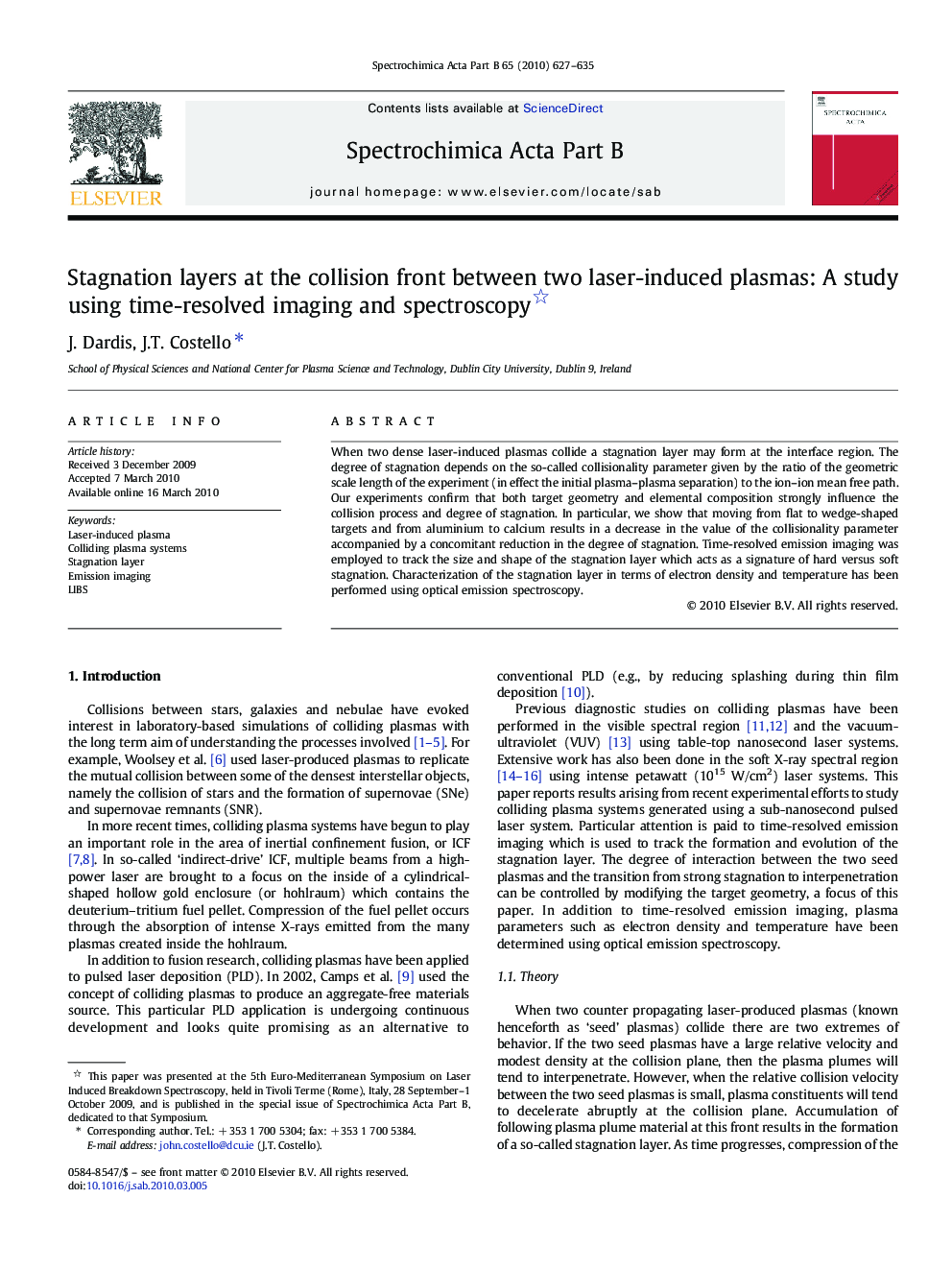| Article ID | Journal | Published Year | Pages | File Type |
|---|---|---|---|---|
| 1240304 | Spectrochimica Acta Part B: Atomic Spectroscopy | 2010 | 9 Pages |
When two dense laser-induced plasmas collide a stagnation layer may form at the interface region. The degree of stagnation depends on the so-called collisionality parameter given by the ratio of the geometric scale length of the experiment (in effect the initial plasma–plasma separation) to the ion–ion mean free path. Our experiments confirm that both target geometry and elemental composition strongly influence the collision process and degree of stagnation. In particular, we show that moving from flat to wedge-shaped targets and from aluminium to calcium results in a decrease in the value of the collisionality parameter accompanied by a concomitant reduction in the degree of stagnation. Time-resolved emission imaging was employed to track the size and shape of the stagnation layer which acts as a signature of hard versus soft stagnation. Characterization of the stagnation layer in terms of electron density and temperature has been performed using optical emission spectroscopy.
